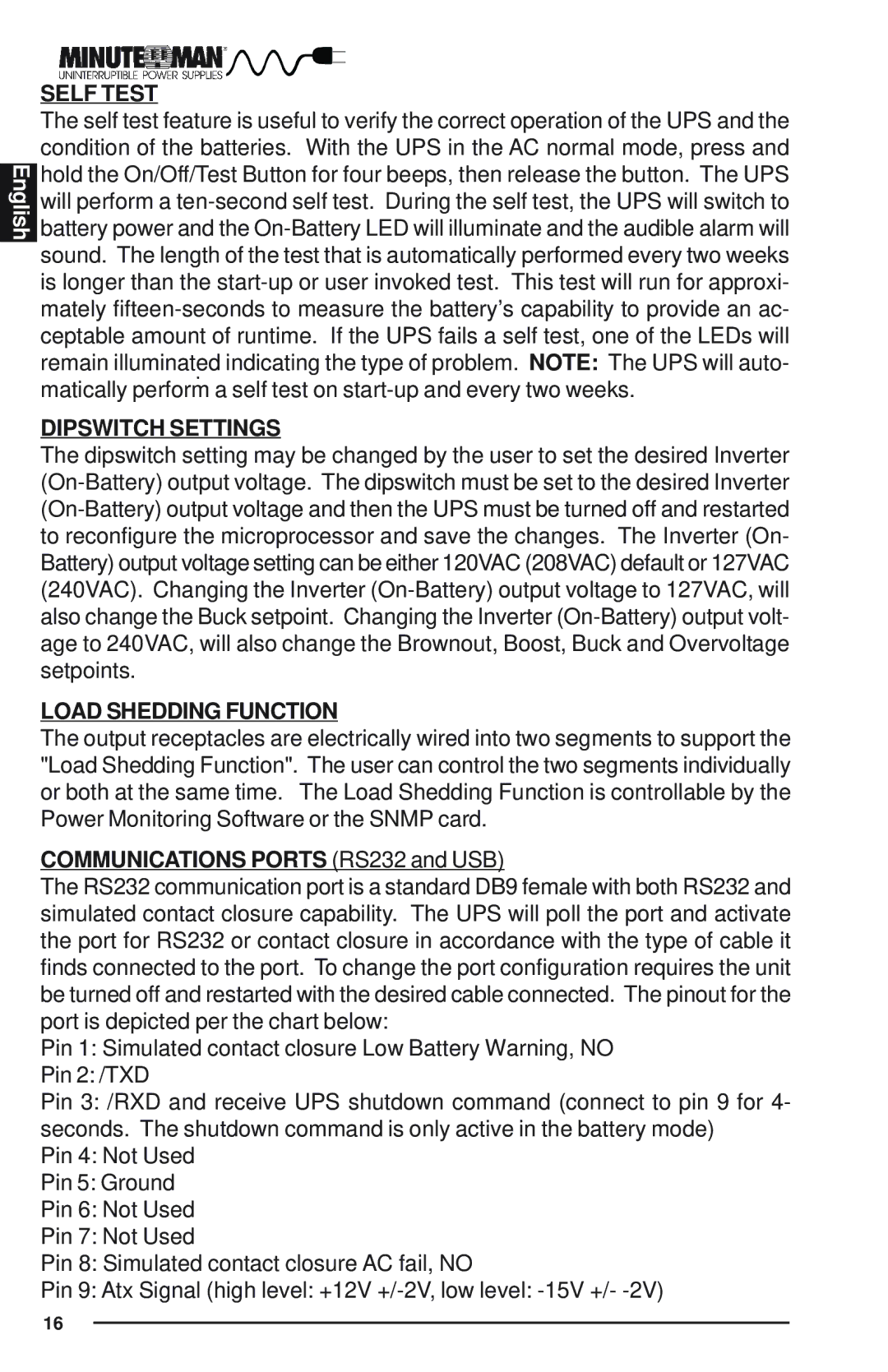
English
SELF TEST
The self test feature is useful to verify the correct operation of the UPS and the condition of the batteries. With the UPS in the AC normal mode, press and hold the On/Off/Test Button for four beeps, then release the button. The UPS will perform a
DIPSWITCH SETTINGS
The dipswitch setting may be changed by the user to set the desired Inverter
LOAD SHEDDING FUNCTION
The output receptacles are electrically wired into two segments to support the "Load Shedding Function". The user can control the two segments individually or both at the same time. The Load Shedding Function is controllable by the Power Monitoring Software or the SNMP card.
COMMUNICATIONS PORTS (RS232 and USB)
The RS232 communication port is a standard DB9 female with both RS232 and simulated contact closure capability. The UPS will poll the port and activate the port for RS232 or contact closure in accordance with the type of cable it finds connected to the port. To change the port configuration requires the unit be turned off and restarted with the desired cable connected. The pinout for the port is depicted per the chart below:
Pin 1: Simulated contact closure Low Battery Warning, NO
Pin 2: /TXD
Pin 3: /RXD and receive UPS shutdown command (connect to pin 9 for 4- seconds. The shutdown command is only active in the battery mode)
Pin 4: Not Used
Pin 5: Ground
Pin 6: Not Used
Pin 7: Not Used
Pin 8: Simulated contact closure AC fail, NO
Pin 9: Atx Signal (high level: +12V
16
